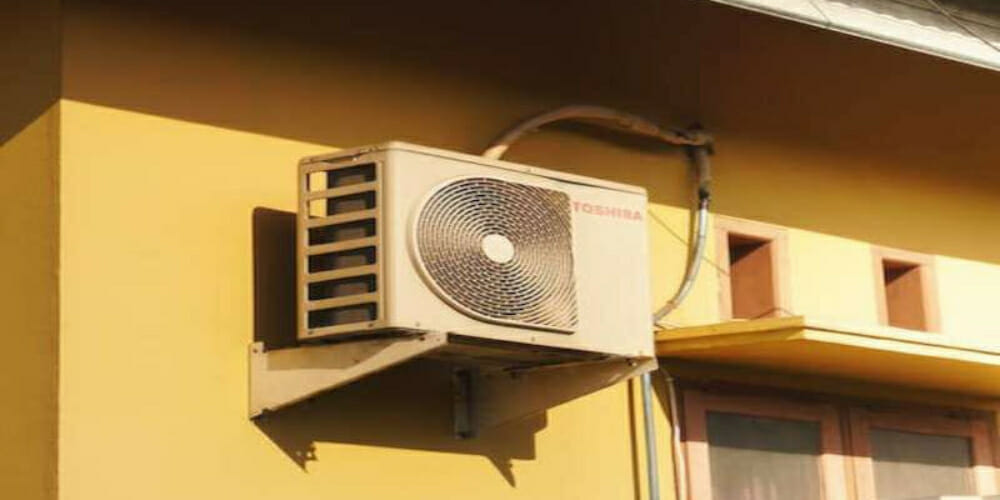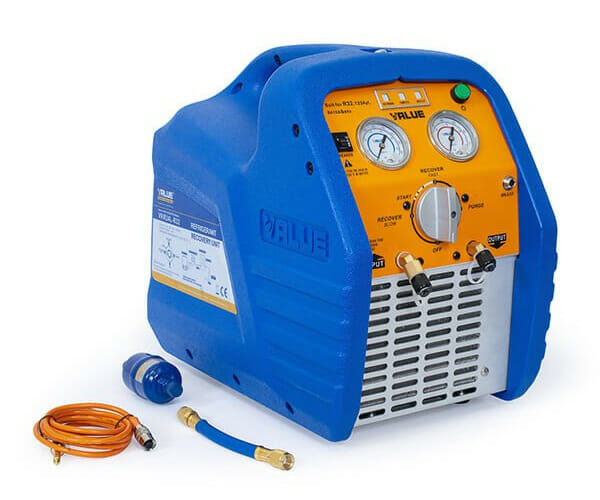When Should the Refrigerant be Removed from the Condenser Outlet? (Guide & Tips)

You should remove the refrigerant from the condenser outlet when the compressor is inoperative, if the evaporator leaks, and if you experience any issues because the condenser is below the receiver or the ambient temperature around it is low. Only remove it after taking the necessary safety precautions (goggles, gloves, and protective clothing) and when the recovery machine, cylinder, and other necessary equipment and tools are ready.
This article covers when it is necessary to remove the refrigerant and the essential requirements before removing it.
Conditions under which to Remove the Refrigerant
Normally, you only remove the refrigerant from the condenser outlet under certain conditions.
Those conditions are:
- The compressor is inoperative.
- The evaporator leaks.
- The location is unsuitable.
- The ambient temperature is too low.
Inoperative Compressor
An inoperative compressor will fail to work.
The compressor maintains a pressure difference between the system’s high- and low-pressure sides. This pressure will equalize if the compressor is inoperative, i.e., if it fails to work. Consequently, the liquid refrigerant might flow back to the compressor (from the condenser). If this happens, the refrigerant could damage it.
Besides removing the refrigerant, another solution to prevent this backflow from happening is to install a check valve. This will isolate the refrigerant from the condenser outlet.
A Leak in the Evaporator
Removing the refrigerant is essential if the evaporator leaks.
Otherwise, a leaking evaporator can cause a loss of the refrigerant charge, reducing the system’s cooling ability. It will also make it less efficient.
Use a recovery machine (or the pump-down method) to remove the refrigerant from the condenser outlet. Doing so could also make it easier to detect the source of the leak and repair the system.
Unsuitable Location
Certain locations are unsuitable for the condenser outlet.
In particular, the condenser should not be below the receiver. Usually, the condenser is always situated in a higher position than the receiver to prevent the liquid refrigerant from accumulating in the condenser. Otherwise, it would result in reduced efficiency and heat transfer.
But you might not have had an alternative option.
Another solution is to pump the refrigerant from the condenser outlet to the receiver using either a head pressure control valve or a liquid pump.
Low Ambient Temperature
A place with low ambient temperature is also unsuitable for the condenser.
For example, the condenser can cause problems if it is on the roof, especially at night and during winter. Low ambient temperature can cause the liquid refrigerant to freeze, and a frozen refrigerant can damage the condenser tubes and valves.
If you have no choice but to locate the condenser in such a place, you will need to drain the refrigerant from the condenser outlet to the receiver so that it can be kept warm by a heat exchanger or heater.
Requirements for Removing the Refrigerant
When removing the refrigerant, follow the necessary safety precautions and ensure you have all the necessary equipment and tools.
Safety precautions: protective goggles, gloves, and protective clothing
Equipment and tools: refrigerant recovery machine and compatible cylinder
Safety Precautions
Safety precautions are paramount because the refrigerant can cause eye irritation, skin burns, and frostbite.
Equipment and Tools

Don’t mix different refrigerant containers. Also ensure:
- The refrigerant recovery machine is compatible with your refrigerant.
- The machine has sufficient capacity to hold the refrigerant charge.
- The machine is in good working condition before using it.
- Only use the right hoses and fittings to connect the machine or cylinder to the valves and ports. There should be no kinks or leaks.
- You follow the manufacturer’s instructions for removing the refrigerant.
You can remove the refrigerant when you have all the above safety precautions and the required equipment and tools.
Potential Health Risks of Handling Refrigerant
| Type of Exposure | Potential Risks | Preventive Measures |
|---|---|---|
| Skin Contact | Frostbite or cold burns due to extremely low boiling point | Use personal protective equipment, such as gloves |
| Eye Contact | Cold burns, frostbite, potential permanent eye damage | Always wear safety goggles |
| Inhalation | Dizziness, nausea, headaches, loss of consciousness, asphyxiation | Work in a well-ventilated area, use appropriate respiratory protective equipment |
| Chronic Exposure | Kidney or liver damage, neurological disorders, increased risk of skin cancers and cataracts (for some older refrigerants) | Regular health checks, ensure safety procedures are strictly adhered to, and proper use of PPE. |
Proper Disposal of Refrigerants
Refrigerants can be harmful to the environment if not disposed of properly. Most refrigerants are potent greenhouse gases, and some older types also damage the ozone layer. Because of this, regulations on the disposal of refrigerants differ globally, and it’s essential to dispose of them in a way that complies with local, regional, and international laws.
Here are some key considerations:
1. Recovery and Recycling: Do not vent refrigerants into the atmosphere. Instead, use a recovery machine to collect the refrigerant. This machine removes the refrigerant from the system and stores it for later reuse or recycling.
2. Disposal: The collected refrigerant should be sent to a certified disposal facility that can process and dispose of it correctly. Disposing of refrigerants in the regular trash or sewage system is illegal.
3. Record Keeping: Depending on your location, you may need to keep detailed records of how much refrigerant you’ve recovered and where it was disposed of. Ensure these records are kept up-to-date and are easily accessible in case of an audit or inspection.
4. Certified Professionals: Due to refrigerants’ potential environmental and health risks, only certified professionals should handle their disposal. If you’re not a certified professional, you should hire one to dispose of the refrigerant.
Always remember: improper disposal of refrigerants harms the environment and can result in significant fines or legal repercussions. Always follow your area’s laws and regulations, and consult a certified professional.
Alternatives to Refrigerant Removal
Always consult a professional when considering these alternatives to ensure the most suitable and effective solution.
| Alternative | Description | Considerations |
|---|---|---|
| System Repair | Repairing a specific faulty component of the HVAC system, such as the evaporator or the compressor. | – Often done without the need to remove and replace the refrigerant, saving time and resources. – Most suitable for systems that are not very old and have a specific repairable issue. |
| System Replacement | Replacing the entire HVAC system. | – More cost-effective for older systems. – Newer systems are more energy-efficient and use more environmentally friendly refrigerants. – Involves significant upfront costs but can lead to savings in the long term. |
| Retrofitting | Modifying the existing system to work with a different type of refrigerant. | Repairing a specific faulty HVAC system component, such as the evaporator or the compressor. |
References
Refrigerant recovery machine. https://elgracool.pl/product-eng-1401-VALUE-VRR24L-R32-OS-refrigerant-recovery-machine-spark-free.html
